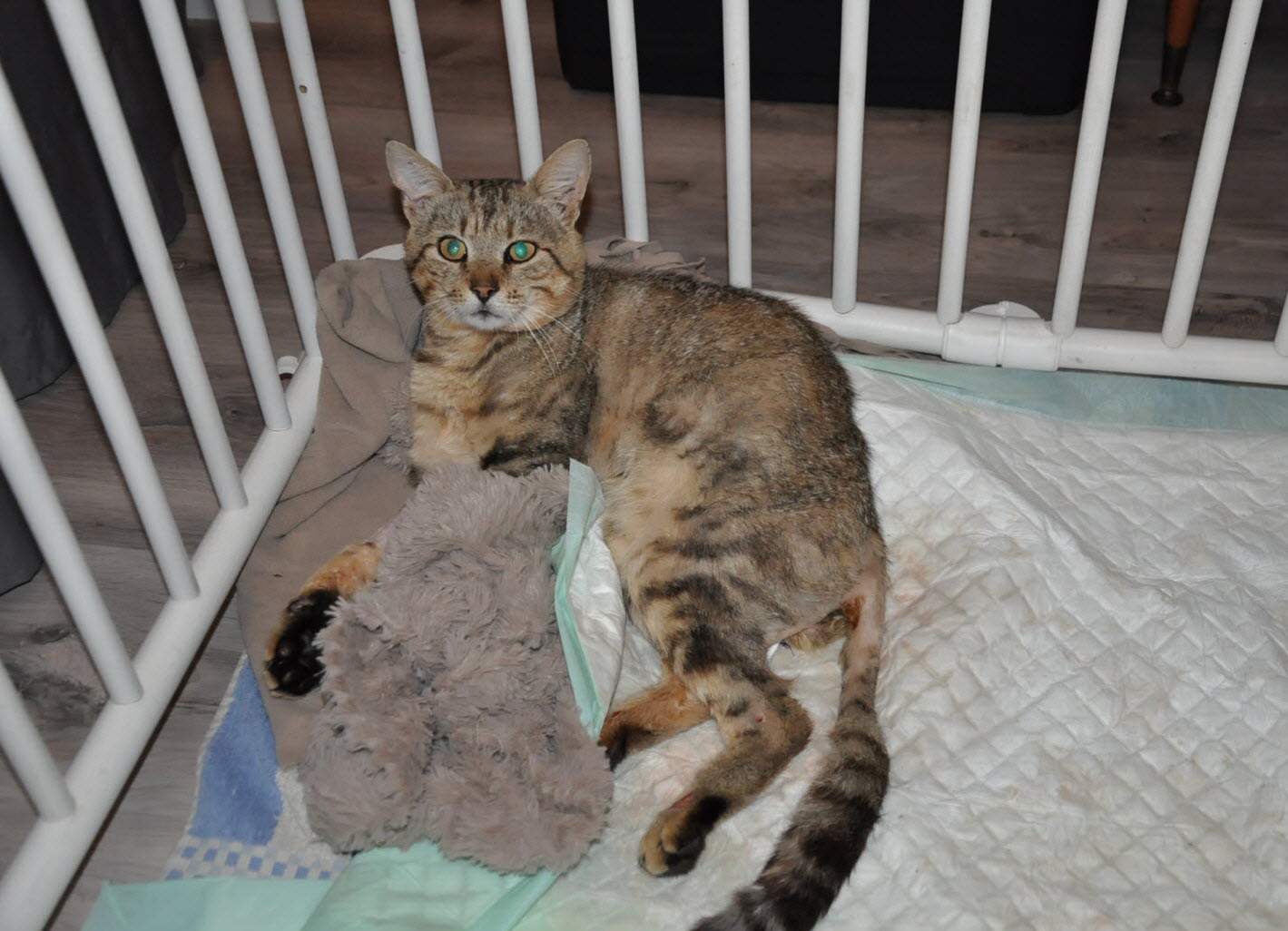What causes sudden paralysis in cats
Paralysis is characterized by an inability of the animal to voluntarily mobilize one or more limbs. We speak of tetraplegia when all four limbs are paralyzed. Among the most frequent causes of paralysis in cats are trauma and aortic thromboembolism.
What causes paralysis in cats?
There are two main causes of paralysis in cats:
• Trauma (mainly road accidents and falls): cats can present lesions responsible for paralysis following a trauma, such as vertebral fractures for example. Depending on the location of the lesions, the paralysis may affect all the limbs (in the case of cervical fractures) or only the hind legs. Other lesions are often associated: other fractures, bladder rupture, diaphragmatic hernia, etc...
• Aortic thromboembolism: this is a sudden onset paralysis in cats, which most often affects the hind legs. It is usually due to a heart disease (hypertrophic cardiomyopathy) and is sometimes the first sign of the disease. It is a very painful condition, and cats have a loud, hoarse meow.
Less frequently, paralysis in cats can be caused by a herniated disc, an infectious disease, a tumor, intoxication, etc...
What should I do if my cat is paralyzed?
If your cat can no longer move one or more of its limbs voluntarily, then it is advisable to consult a veterinarian quickly.
The veterinarian will give you instructions for the transport of your pet. Following a road accident, it is advisable to transport your cat on a rigid support (wooden board for example) which will act as a stretcher. Be aware of the animal's reactions when you handle it: you must be vigilant to bites and scratches, the reactions are unpredictable in a painful animal.
The veterinarian will perform a thorough clinical examination to locate the lesions. Additional examinations may be necessary (X-ray, scanner, etc...) to determine the nature of the lesions. The veterinarian will then be able to tell you more about the therapeutic approach.
The prognosis depends on the cause of the paralysis, on the location of the lesions, on how early the animal is treated, etc... In some cases, the paralysis is reversible and the animal regains the use of its limbs, but after-effects are possible. Concerning aortic thromboembolism, the prognosis is generally poor: cats do not always recover and recurrences are unfortunately frequent.

